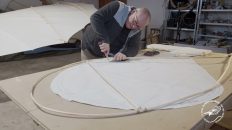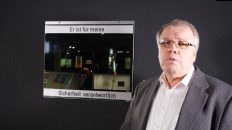With »The Art of…« ZKM invites artists of the collection to talk about a topic of their choice. With Frieder Nake (*1938 Stuttgart), an artist has accepted the invitation who wrote history with his early aesthetic experiments using computers.
As early as 1964, the mathematician created a series of abstract drawings on a mainframe computer at the Technical University of Stuttgart. They are among the first works of »computer art« worldwide. Anyone who wants to understand the pioneering era of digital art has no choice but to read Frieder Nake’s brilliantly formulated essays and manifestos on questions of information aesthetics and art.
Frieder Nake chose »The Art of Being Precise« as the title for the conversation. He explains his choice as follows: „There is a book by Max Bense, »Die präzisen Vergnügen« [The Precise Pleasures] (1964). For him, that was the program. Emotions in art? How vulgar! We think pictures, we don’t make them. We have machines for making them. We program the machines so that they do what we want. In the mid-1960s, when this started, Sol LeWitt said, „The idea becomes a machine that makes the art.“ With the computer, the semiotic machine had emerged, a machine nobody foresaw. The image-making took on a radically new dimension: it was no longer a matter of making one image, but of thinking an infinite number of them. And, indeed, when I think one picture, I immediately think many and more. Please, always keep in mind: We think pictures, it is said, and not: we think of the pictures! This is a big and a radical difference. In the mid-1960s, the algorithmic revolution broke into art and has been writing a strand of its history ever since.“
Frieder Nake talks with Margit Rosen, Head of Collections, Archives, and Research, about algorithmic thinking, computer graphics, Karl Marx, chance and beauty, and why there are no more masterpieces.
More information: https://zkm.de




